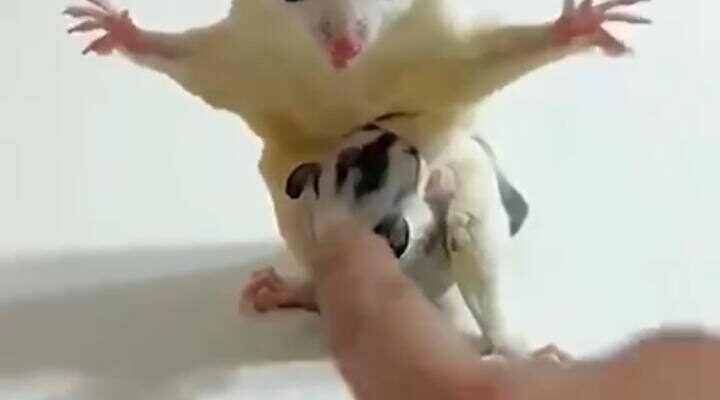Feeding a sugar glider for the first time can be an exciting but somewhat nerve-wracking experience. These small, nocturnal marsupials have very specific dietary needs, and it’s crucial to provide them with the right balance of nutrients for their health and well-being. Here’s what I would do when feeding a sugar glider for the first time:
1. Prepare the Right Diet
Sugar gliders are omnivores, meaning they require both protein and fruit/vegetable sources in their diet. A typical diet should consist of:
- Fruits: They enjoy a variety of fresh fruits like apples, berries, grapes, melons, and papayas. It’s essential to avoid citrus fruits, as they can upset their digestive system.
- Vegetables: Dark leafy greens (such as kale, spinach, and dandelion greens) and some vegetables like sweet potatoes and carrots are great options.
- Protein: In the wild, sugar gliders eat insects and nectar. For pet sugar gliders, I would provide protein in the form of hard-boiled eggs, cooked chicken, mealworms, or specially formulated glider pellets.
- Calcium and Phosphorus Balance: Sugar gliders require a good balance of calcium and phosphorus in their diet. Too much phosphorus can interfere with calcium absorption and cause health issues like metabolic bone disease. Offering calcium-rich foods like yogurt or a calcium supplement is essential, particularly if you are feeding a fruit-heavy diet.
2. Introduce the Food Slowly
When feeding a sugar glider for the first time, I would introduce food gradually. This prevents them from feeling overwhelmed and gives them a chance to try different tastes. I would start with small amounts of a few ingredients (such as fruit and a protein source), ensuring they aren’t overfed at first.
I would place the food in a small dish, preferably a shallow one, to make it easier for the glider to access. If you’re using fresh fruits or veggies, I would ensure they’re cut into small, manageable pieces that are easy to grasp.
3. Observe the Sugar Glider’s Preferences
Every sugar glider has unique tastes, so I would observe which foods they seem to gravitate towards. Some may enjoy certain fruits over others, or they may be more inclined to eat protein over vegetables. It’s important to rotate foods to keep their diet varied and stimulating, ensuring they get a full spectrum of nutrients.
4. Provide Fresh Water
Water is crucial for hydration, especially when offering fresh fruits and vegetables, which contain water content. I would ensure fresh water is always available in a bottle or shallow bowl. Change the water daily to prevent contamination and keep it fresh.
5. Monitor for Allergies or Discomfort
After the initial feeding, I would monitor my sugar glider for any signs of digestive upset or allergies. If they seem lethargic, develop diarrhea, or show a lack of interest in food, I would consult with a vet to ensure there isn’t an underlying health issue.
Overall, feeding a sugar glider for the first time involves careful preparation, patience, and close observation. By offering a well-balanced diet, I would ensure my pet is happy, healthy, and thriving in its new home.
